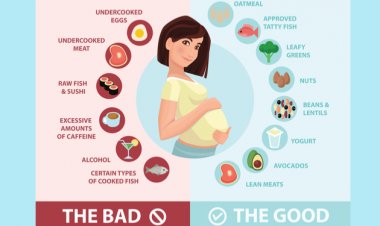How long does it take a woman to get pregnant
It is impossible to say how long it takes to get pregnant as this time varies from woman to woman. How long does it take to get pregnant? This is a very difficult question. Because no one can give an exact answer to this question. But you can know through this article how long does it usually take for a woman to conceive.

Infertility is a medical condition that can affect millions of couples. It affects both men and women equally. Most couples get pregnant within just three months of trying. If the couple is too old, the time to get pregnant can be prolonged, with some couples reducing fertility due to bad habits (such as drug abuse).
Factors affecting the chances of conception –
There are many factors that can affect your chances of conceiving, which mainly include:
- Age
- General health
- Reproductive health
- Frequency of sex
- Some women get pregnant in a very short time, while others take a long time. This problem can be troublesome, but it is normal.
How long does it take to get pregnant?
Most couples (about 84%) who have regular sex and do not use contraception achieve pregnancy within 1 year.
Women's fertility declines as they get older or get older. One study found that the timing of ovulation in couples who regularly had unprotected sex was as follows:
- Among couples aged 19 to 26, 92% of couples conceive after 1 year and 98% after 2 years.
- 82% of couples aged 35 to 39 conceive after 1 year and 90% after 2 years.
In addition, all couples trying to conceive may have the following possibilities for getting pregnant:
- Only 30 percent of women can get pregnant during the first cycle (about a month).
- Up to 60 percent of women can become pregnant within three cycles (about three months).
- Up to 80 percent of women can become pregnant within six cycles (about six months).
- 85 percent of women can become pregnant within 12 cycles (about a year).
- 91 percent of women can become pregnant within 36 cycles (about three years).
- About 93 to 95 percent of women can become pregnant within 48 cycles (about four years).
- If a couple is 35 years of age or older, a specialist (physician) must be consulted if they do not become pregnant during continuous trying.
Can age affect the ability to get pregnant?
Couples who are over the age of 35 should only try for six months to become pregnant before seeking medical help. And if age 40 or older, a doctor's advice should be sought before deciding to try for a child.
Your age plays an important role in your chances of getting pregnant. After the age of 20, the natural fertility of a woman starts decreasing gradually. Because it has less number of eggs, the quality of the remaining eggs decreases with age.
After 35 years there is a great reduction of eggs and after 40 years the chances of achieving pregnancy become very less.
According to the Human Fertilization and Embryology Authority, 95% of women over the age of 35 can become pregnant after about three years with regular unprotected sex, but only 75% of 38-year-olds succeed in becoming pregnant. Can happen.
Cause of Infertility –
There can be many reasons for infertility. Mainly the doctor may look for the following factors of infertility.
Causes of female infertility –
The doctor checks for abnormalities of the ovaries, eggs, fallopian tubes, and uterus to find out the causes of female infertility. The most common cause of infertility in women is irregular or absent ovulation.
A woman can also develop blockage of the fallopian tubes or structural problems in the uterus. These conditions can prevent sperm from meeting the egg or the fertilized egg from setting in the uterus. In addition, women may also have hormonal or genetic abnormalities that lead to infertility or recurrent miscarriages.
Causes of male infertility –
Any problem that arises with the sperm cells can cause male infertility. To diagnose any problems related to sperm cells, the doctor can measure the number of sperm cells, motility and the percentage of normal sperm cells produced by the man.
Abnormality in any of these factors can cause male infertility. The causes of male infertility vary, but they can be related to structural, hormonal, genetic and medical causes.
Unexplained causes of infertility –
Around 5 to 10 percent of couples suffer from unexplained infertility. This means, that doctors are unable to find the cause of infertility in the couple concerned. This is quite frustrating for the concerned couples, as no treatment can be done to remove infertility in this condition.
Multiple factors of infertility –
In some couples, both malefactors and female factors are the cause of infertility. For example, a male may have a low sperm count in a couple and a female may have a blocked fallopian tube. These types of couples usually need medical help to conceive.
Infertility treatment –
There are many options available to treat infertility. According to the condition, age, and budget of infertility, the doctor can prescribe its treatment. Mainly to treat infertility, the doctor may recommend the following methods.
Timed intercourse to conceive –
This is the simplest method out of all the available infertility treatments. It is suitable for women who do not ovulate or who have difficulty detecting ovulation.
The doctor will give medicine to make the woman ovulate or will test for natural ovulation. Therefore, under this treatment, when the right time for ovulation comes, it is instructed to have sex in the next few days. If a woman does not become pregnant within a few cycles (months), a doctor may recommend more effective treatments.
Insemination to get pregnant –
During intrauterine insemination, the male partner of a pair produces a sperm sample. This sample is specially washed to remove excess cells. The doctor then inserts a small catheter into the uterus of the woman concerned. Finally, the sperm is either introduced into the uterus through a catheter or given injections. This treatment can be done naturally during ovulation or while taking medicine to ovulate.
In vitro fertilization to get pregnant –
Under this procedure, the woman is given a series of injections to help the ovaries produce more eggs. After those eggs are matured or ready, they are expelled from the ovary with the help of a simple surgery.
These eggs are then fertilized with sperm from that woman's partner in the laboratory. Thus the fertilized egg is known as an embryo, which is allowed to develop in the laboratory for a few days. After three or five days, one or two good-quality embryos are transferred to the woman's uterus through a procedure.
Methods of Conceiving Third-Party Reproduction –
Third-party reproduction involves the use of a third person to become pregnant or become pregnant. This third person can be a sperm donor, an egg donor, or a pregnancy bearer.

 mybabycare
mybabycare 















